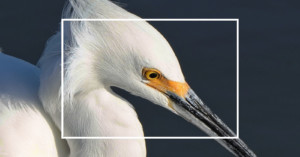
Focal Length, Diagonals, and Depth in Photos
I’ve long strived for depth in certain photos. I like a line that begins in the lower corner and heads for the diagonally opposite upper corner.

I’ve long strived for depth in certain photos. I like a line that begins in the lower corner and heads for the diagonally opposite upper corner.

Zone focusing (ZF) is a great way to pre-set your camera's focus and aperture, then use that setting for multiple shots. Street shooters love it. And it's also great for sports, pets, jumpy kids, parties, or any subjects in motion.

Macro photography works well with conventional lenses and inexpensive extension tubes. The combination achieves 0.3x to 0.5x magnification. Depth of field is much greater with these moderate magnifications than at the 1x magnification possible with macro lenses.

I've shot thousands of pics of insects without flash and tens of thousands with flash. When the lighting is bright and sunny, the results can be good without flash. But when I venture out in pursuit of photo ops, I often encounter poorly lighted situations which are better with flash. If you study the work of experienced insect photographers, you'll find that most of them use flash.

Dear lens manufacturers,
I'm writing this letter to remind you of something you well know. The age of mirrorless cameras is upon us. And with this comes the benefit that we can compose, focus, and shoot at f/8, f/11, and f/16.

As you all know, bees help us put food on the table. Their pollination of California almonds alone has been valued at a billion dollars. They have also become my favorite photographic subject. I wrote about this last September.

This article is aimed at people who would like to advance their basic photography skills. I assume that you already make decent photos and are familiar with f-stops, ISO, shutter speeds, etc. But I'm hoping that this read will prove worth your time and lead to even greater photographic skills and enjoyment.

Many of us enjoy quality. Be it a car or a lens, there's a pleasure in using quality things. And in the case of lenses, how perceivable is the quality of the images captured?

One of the attractions of Sony mirrorless cameras is the availability of a wide assortment of lenses, from Sony and other manufacturers. But that can be hazardous to your wallet.

My favorite "walking around" and landscape focal length is 35mm equivalent. I have some 24mm lenses which approximate that field of view on my APS-C camera. One is the Tamron 24mm f/2.8. But despite its great resolution, it is slow to focus and pretty large. So after being very pleased with my Sigma 45mm Contemporary, I decided to give their new 24mm version a try. I'm glad I did.

This article is aimed at folks who don't edit their photos at all. If you aren't editing you're missing a lot of fun. Think of me more as a cheerleader than a teacher. I'll show you simple edits that can be done in a few minutes. We won't be adding non-existent clouds nor making fat people thin. This is just simple stuff. Let's start with this shot.

I haven't lusted for a fixed prime camera because it's so easy for me to mount a short prime lens on my ILC. But I am intrigued by the idea of walking around with a short prime on my camera, even though it is limiting compared to walking around with a zoom.

When I was a semi-professional 4x5 landscape photographer I often spent a half-hour shooting a single sheet of film and several hours enlarging it to the best of my ability. I sought the sharpest possible result. And now in the digital age, I still pursue sharp images.

Full frame and medium format systems can produce images of greater quality than APS-C. But that greater quality is rarely perceived, even in very large prints. I call it "overkill" because we cannot perceive the advantage of this more expensive and heavier equipment.

In the 1970s, I was seriously pursuing my hobby of black and white landscape photography with a 4x5 view camera. My prints were being sold by the Image Gallery in Palo Alto and the Focus Gallery in San Francisco and by me at occasional street fairs. Selling prints never generated much money, but I appreciated the acknowledgment of my work.

We all know that reducing aperture increases depth of field, but how much does that help? Here are some facts about depth of field.

It's common for photo writers to state, "A 100mm lens on a Micro Four Thirds camera has the equivalent reach of 200mm on full frame". While the field of view is equivalent to 200mm FF, the reach is not necessarily equivalent.